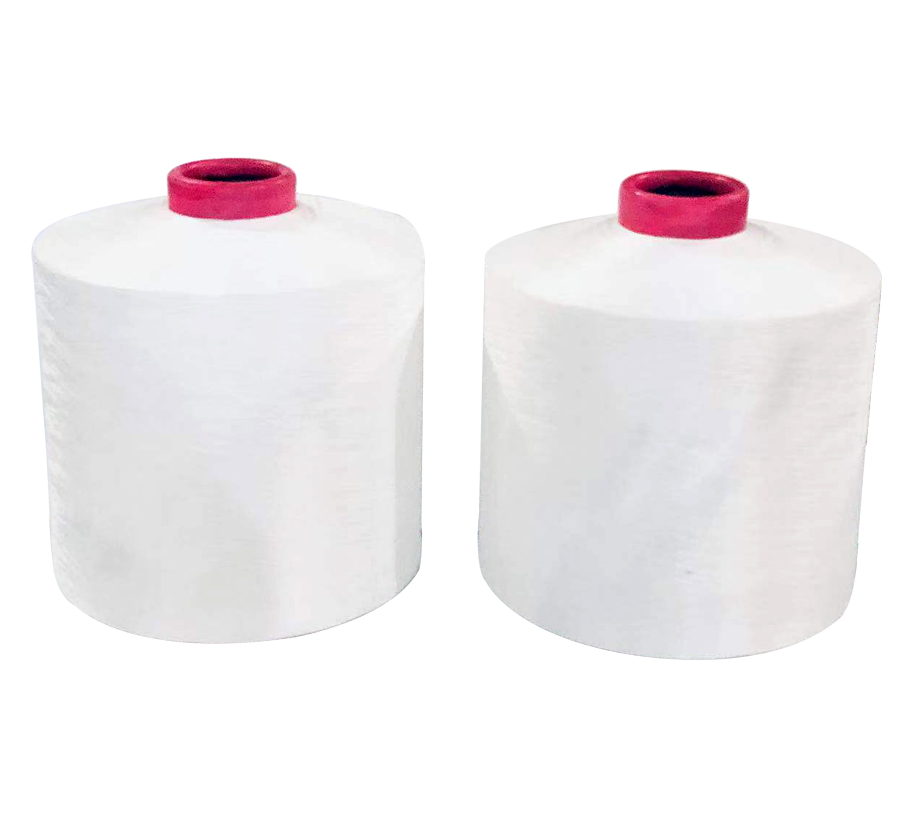Yellow Orange China 300D/96F Dty Polyester Yarn Eco-friendly Recycle Dty Yarn Fo...
See Details
Polyester Draw Texturing Yarns (DTY) are used for a variety of fabrics such as clothing, home furnishings, seat covers and bags. DTY yarn can be semi-dull, bright or trilobal bright depending on the type of section of filaments it was spun from.
Texturing is a treatment in which flat filaments are distorted to have loops, coils or curls along their length to gain increased bulkiness, porosity, softness and elasticity in some situations.
Textured Yarns
Texturing is a treatment in which flat filament yarns are distorted to have loops, coils, curl or crimps along their length. This is used to gain increased bulkiness, porosity, softness and elasticity in some situations.
Draw texturized yarn (DTY) is the popular texturing process in the textile industry because of its numerous advantages, especially for thermoplastic fibers. This process generates irreversible distortions and alterations without causing the inter-fiber bonds to break.
The use of steam as a substitute fluid for air in spun-like textured yarn manufacturing holds the potential for competitive advantage, lower manufacturing costs and streamlined manufacturing capabilities. In addition, this method can be environmentally friendly, since steam is generally cheaper to produce than compressed air.
Textured Filament Yarns
Textured filament yarns are characterized by their physical and surface properties. In some cases the texture is imposed directly on the extruded shape of the filament, whereas in others a prefabricated film or filament is used to achieve this goal.
Generally, these composite yarns have good mechanical strength and are well suited for high value fabrics. They also have good pill resistance, dimensional resistance and crease resistance, and are easy to wash and dry.
There are two main types of textured filament yarns: loop and crimp. Loops are formed by over-feeding regular filament yarn over an air jet at a faster rate than the take-up rolls pull it off, causing some of the filaments to loop around each other in the air stream.
Crimp is achieved by displacing the individual filaments from their natural and relatively close packed position into a distorted position by twisting or other means. This process, which can be applied to monofilaments as well as multi-filament yarns, is primarily used for hosiery.
Textured Spun Yarns
Spun yarns are a type of textile fiber that has been twisted into various shapes. They offer a high level of strength and are often used in woven and knitted garments.
Spun yarn can be produced from natural or synthetic fibers and are plied for increased strength. They also don't pill easily and are more durable than single-ply yarns.
Textured spun yarns can be made by several methods, including crimping, twisting, and air jet texturing. These techniques can make synthetic yarns appear more like natural fibres, making them hairier or softer.
The crimping process is one of the common ways to create textured yarns. This process involves putting the yarn through a Machine that compresses and stretches it to create waves or curls in the fibers.
The crimping process can also be applied to non-natural fibers, such as polyester. This allows the resulting yarn to have a unique texture that may be useful for certain applications.
Textured Nylon Yarns
Draw Texturing Yarns or DTY are a type of synthetic yarn that gives textiles a stretchy and bulky feel. They also offer a touch of luster, courtesy of the false twist process they employ.
DTY yarn is a good choice for woven and knit fabrics in apparel and home furnishings. It is available in a variety of deniers, ranging from 15D to 280D, and comes in semi-dull, full dull, and bright DTY finishes, depending on the cross-sections of the filaments spun into it.
The DTY process is one of the efficient ways to make a synthetic yarn, and it can be accomplished by using a combination of thermal and mechanical techniques. This technique creates a stretchy and bulky yarn with a variety of crinkle effects, including loops, crimps, and coils. It also boasts a varying ability to revert to its original shape. This makes it a great option for use in apparel, and is often referred to as the textured yarn.
